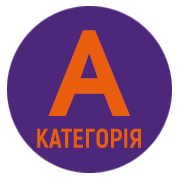PHYSICAL ACTIVITY AS A PREVENTION OF AGING LOSS OF MUSCLE MASS
DOI:
https://doi.org/10.32782/2522-1795.2022.12.12Keywords:
sarcopenia, oxidative stress, chronic inflammation, mitochondrial dysfunctionAbstract
During the last 30 years, geriatric syndrome has been actively studied by foreign scientists. In Ukraine, gerontologists began to deal with this issue relatively recently, and sarcopenia received the status of an independent disease according to ICD-10 with code M62.84. The aim of this review was to discuss the effects of muscle contraction in preventing muscle atrophy and some of the evidence for combined interventions for the treatment and prevention of sarcopenia. The article analyzes studies that have shown that progressive weight training can lead to increased muscle mass in the elderly, since the muscle fibers of the elderly are capable of hypertrophy and do not differ from similar changes observed in in young people. These results suggested that the muscles of the elderly are not limited in their ability to adapt. Today, the main areas of prevention of sarcopenia in people of older age groups are nutritional correction and therapeutic physical education. The effectiveness of physical exercise exceeds the results of other types of treatment for sarcopenia, which were used without a combination with physical exercise (various options for hormone replacement therapy, nutritional correction, etc.). A number of authors have shown that after progressive training in the elderly, both the length of muscle fiber bundles and the stiffness of the ligamentous apparatus increase by 10% and 64%, respectively. However, weight training is considered as one of the treatment and prevention strategies for both sarcopenia and asthenia, as it deserves serious attention and medical correction of metabolism in this group of people. Oxidative stress, chronic inflammation, and mitochondrial dysfunction have been shown to play an important role in age-related muscle atrophy, so researchers have begun to recommend the use of antioxidants and other calorie-reducing foods. Conclusion: primary prevention of age-related sarcopenia in adults should primarily include daily continuous physical exercise, supplemented by antioxidant therapy and moderate caloric restriction.
References
Rędowicz, M. J., & Wojton, D. (2020). Plastyczność mięśni szkieletowych: Od miogenezy po regenerację. Kosmos, 69(4), 689-702.
Turżańska, K., Drelich, M., & Posturzyńska, A. (2019). Rola protein I aktywnosci fizycznej w leczeniu I zapobieganiu sarkopenii protein and physical activity in prevention and treatment of sarcopenia. Wiadomości Lekarskie, 72(9), 1660-1666.
Dzerovych, N. I. (2019). Європейські рекомендації 2019 року щодо діагностики саркопенії. PAIN, JOINTS, SPINE, 9(4), 257-261.
Kosiński, J., Blicharski, T., Przepiórka-Kosińska, J., & Dubiel, A. (2019). Sarcopenia–niedostrzegany problem starzejacego sie spoleczenstwa Sarcopenia-unnoticed problem of aging society. Wiadomości Lekarskie, 72(9), 1655-1659.
Kopchak, V. M., Pererva, L. O., Shkarban, V. P., Trachuk, V. I., & Lynnyk, S. V. (2021). Sarcopenia as a predictor of postoperative complications in patients with pancreatic cancer. Медичні перспективи, 26(1), 98-105.
Коpchak, V. М., Pererva, L. О., Duvalko, О. V., Khanenko, V. V., Аndronik, S. V., Suhachov, S. V., & Кropyvnytskyi, V. О. (2019). The methods of prophylaxis of the morbidity occurrence after pancreatico-duodenal resection. Klinicheskaia khirurgiia, 86(5), 3-7.
Didokha, І. V., & Aravitska, М. G. (2021). Effects of physical therapy on the level of kinesiophobia, somatic markers of sarcopenia and indicators of fall risk in elderly persons with Parkinson's disease. Art of Medicine, 50-58.
Korczak, J. (2020). Powikłania terapii hormonalnej (ADT–androgen deprivation therapy) a układ ruchu u pacjentów z rakiem prostaty. Letters in Oncology Science, 17(1), 1-6.
Abramowicz, P., Glinkowski, W., Pecuszok, P., & Konstantynowicz, J. (2020). Nowe narzędzie do oceny jakości życia osób starszych z sarkopenią: kwestionariusz SarQol® w wersji polskiej. In Rheumatology Forum (Vol. 6, No. 2, pp. 63-69).
Нoroshko V. (2021). The impact of hypodynamia on the functional state of health of young people during their studies in higher educational institutions. Digital economy trends: global challenges, strategy and technologies: monograph, 126-134
Petermann‐Rocha, F., Balntzi, V., Gray, S. R., Lara, J., Ho, F. K., Pell, J. P., & Celis‐Morales, C. (2022). Global prevalence of sarcopenia and severe sarcopenia: a systematic review and meta‐analysis. Journal of cachexia, sarcopenia and muscle, 13(1), 86-99.
Downloads
Published
How to Cite
Issue
Section
License

This work is licensed under a Creative Commons Attribution-NonCommercial-NoDerivatives 4.0 International License.












